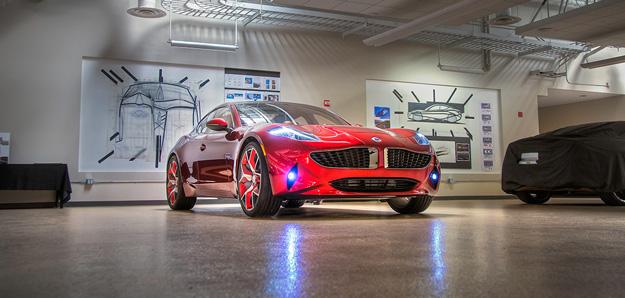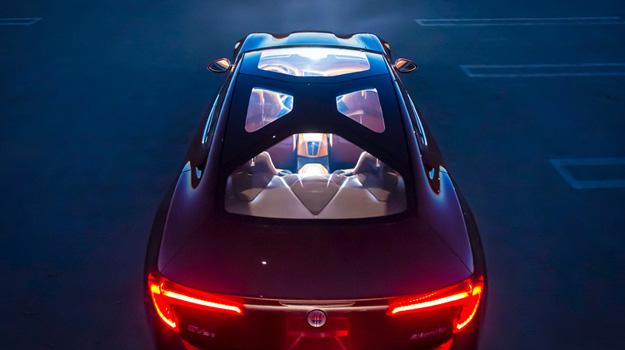
Eagerly awaiting Fisker Automotive’s upcoming Atlantic extended-range plug-in hybrid? Prepare to wait a little longer. According to Inside EVs, and citing leaked company documents dated “a few weeks ago,” the originally estimated prototype production date for the Atlantic will likely be pushed back by as much as a year, meaning we won’t be seeing the car until late 2014 at the earliest. In addition to providing a clearer timetable for the Atlantic’s arrival, the leaked documents also hint at a possible price point and specs.
The Atlantic — formerly known as Project Nina, prior to its unveiling at last month’s New York Auto Show — is an extended-range plug-in hybrid concept in the same vein as the Fisker Karma, and will more than likely utilize a similar “EV- ER” powertrain found in its bigger brother.

Prior to the Atlantic’s debut, talk had already begun of a smaller sedan being worked on, and eventually produced, at the company’s Wilmington, Delaware, factory. But other than Henrik Fisker stating that the Atlantic would feature a “much lower price point than the Karma,” while hinting at a favorable price comparison to a higher-end BMW or Audi A5, we were left to speculate on figures north of $45,000, as well as further details regarding the car’s engine and performance specs.
Turns out those figures weren’t too far off the mark. According to the leaked documents, the Fisker Atlantic will go after some heavy hitters in the performance luxury segment by seeking to compete with the BMW 3 and 5 series, Mercedes C and E Class, Jaguar XF, and both the Audi A4 and A6, placing a sticker price somewhere between $50,000 and $60,000.

As far as performance specifics are concerned, nothing has been provided officially by Fisker. We know the company has contracted German automaker BMW to supply a 4-cylinder turbocharged engine, but other than that, details remain fuzzy. Unconfirmed reports indicated that the Atlantic will have 300 horsepower, a 0-60 time of 6.5 seconds, and emissions of 50 grams per kilometer of CO2. Of course, it’s important to remember that these are in fact leaked documents, so any figures or specs need to be taken with a heavy grain of salt.
Much ado has been made over where the Atlantic will be produced. As mentioned, the Atlantic has been slated for production at its Wilmington, Delaware, plant for some time now, but difficulty securing previously awarded Department of Energy loans has required Fisker to raise its own private capital. Not surprisingly, the leaked documents make mention of the company’s financial struggles, but suggest all the same that the Atlantic will indeed be produced in the United States, albeit at a much lower volume and slower pace than originally intended.

Production for Fisker’s first car, the Karma, is currently located in Finland, a detail that has caught the ire of those within the automotive industry and the government — considering the heavy bill tax-payers were forced to foot.
We’d be lying if we said we weren’t excited for the Atlantic, but we can’t help but be concerned over the future of the vehicle. While there are those that have already brushed aside the sporty EV as nothing more than a concept — citing the wide array of financial difficulties Fisker has endured and the negativity surrounding the Karma — we remain much more optimistic. There’s no denying Fisker has a winning design on its hands with the Atlantic. If it can establish itself as a viable alternative, both in price and performance, to some of its German rivals there is no reason why the Atlantic can’t succeed. But in order to do so, it must avoid all previous pitfalls its predecessor has so publicly endured . And that won’t be easy.


